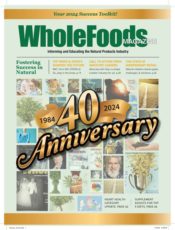Kanagawa, Japan—Non-alcoholic steatohepatitis (NASH), an extreme form of fatty liver disease, can be severe and lead to cirrhosis. Researchers from Kanagawa Institute of Technology in Japan believe a mixture of vitamin E analogs (tocotrienols and alpha-tocopherol) may help, based on data from a new small animal study.
The researchers induced NASH in rats and then fed them one of five diets for four weeks: a vitamin E-deficient high-fat diet group (control group), a vitamin E-deficient high-fat diet plus TNF/GalN, an alpha–tocopherol-enriched high-fat diet plus TNF/GalN, a tocotrienols-enriched high-fat diet plus TNF/GalN or an alpha–tocopherol- and tocotrienols-enriched high-fat diet plus TNF/GalN. TNF is an inflammatory cytokine. The rats’ liver lipid content was measured after euthanasia.
Liver triglyceride content increased in the vitamin E-deficient group, while it was significantly decreased in the alpha–tocopherol/tocotrienols combination group. Two markers of liver function—AST and ALT—decreased in the tocotrienols group and were lower in the mixed vitamin E analog group. The researchers state, “These results suggested that tocotrienols intake is effective for reducing hepatic inflammation, and that these effects were reinforced by intake of alpha-tocopherols and tocotrienols simultaneously.”
In addition, inflammatory cytokines in the liver were inhibited in the tocotrienols and the mixed vitamin E groups. “Hence, we concluded that inhibition of inflammatory cytokine mRNA expression would impact on the progression of steatohepatitis,” the group wrote.
Commenting on the study, W.H. Leong, vice president of Carotech Inc., stated, “This study shows us that taking both natural full-spectrum tocotrienol complex and alpha-tocopherol together help to synergistically improve NASH and support healthy liver. The combination of alpha-tocopherol and d-mixed tocotrienols work synergistically and exert better protection for liver, than the standalone pure alpha-tocopherol and pure mixed-tocotrienol.”
These data are published in the Journal of Clinical Biochemistry and Nutrition.
Published in WholeFoods Magazine, July 2013, (online 5/17/13)










